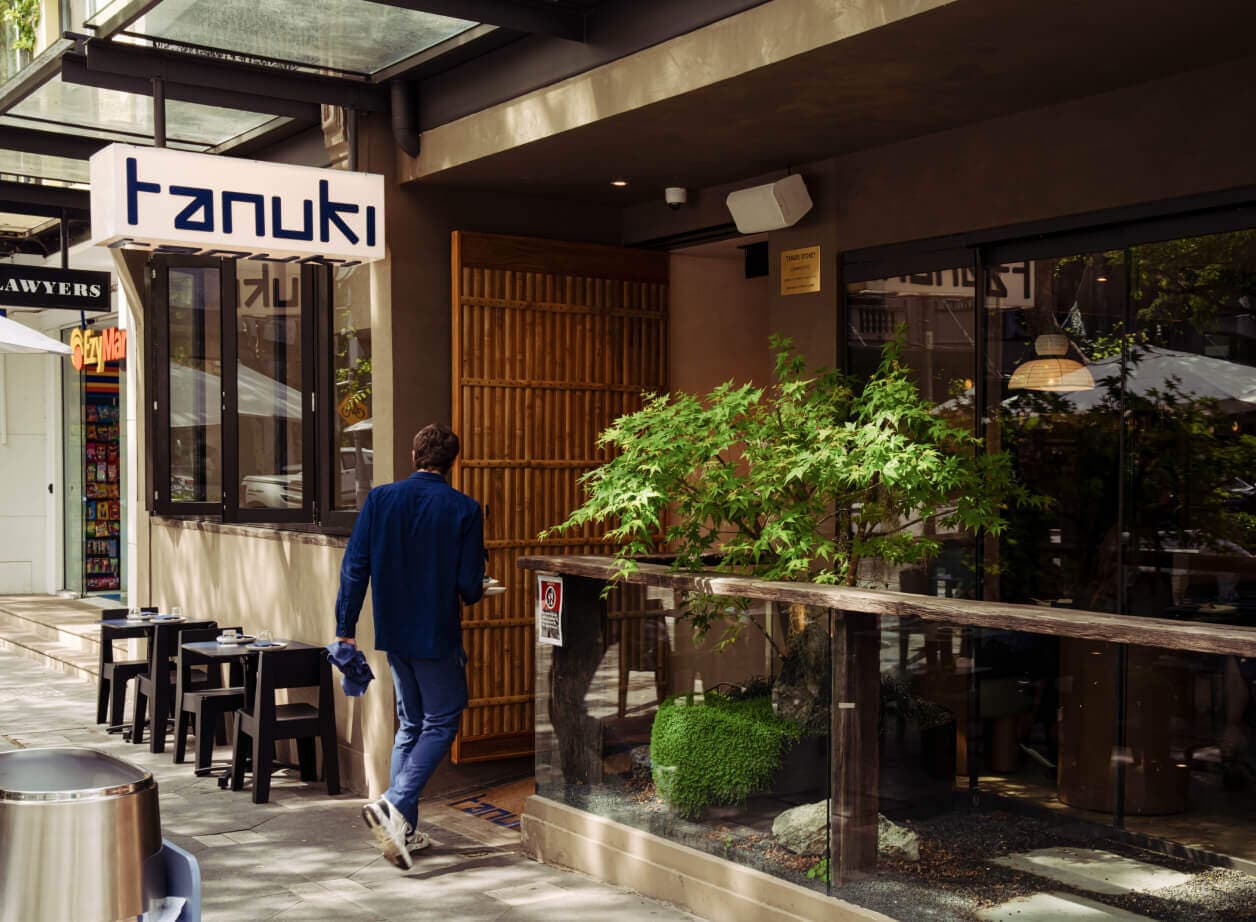
EOFY Tax Tips for Small Businesses from a CPA with 40+ Years Experience
With tax time almost upon us, we caught up with Lloyd Richardson, CEO of Jim’s Tax and a Fellow CPA, to get his perspective on what small business owners need to keep in mind as the end of the financial year approaches.
Lloyd has spent more than 40 years in the accounting world – he grew up in the industry, took over his father’s practice, and now heads up a 60-strong network of tax agents and bookkeepers across the country, so you could say he knows a thing or two about tax.
Read on to learn his practical, no-nonsense advice for small business owners looking to get the most out of this end of financial year.
Preparing your small business for EOFY tax.
Question: How far in advance should small businesses start preparing for EOFY?
Answer: Small business owners generally prepare BAS statements quarterly, and that’s when you should be thinking about your end-of-year tax too. A good bookkeeper will prep your financials quarterly and refer them to a tax agent, who can then estimate your tax position.
It’s always better to plan early, but a lot of businesses wait until June and panic. You need a proactive bookkeeper. A Jim’s bookkeeper is trained to handle this, and then your tax agent (hopefully also a Jim’s Tax person!) will review it at tax time. But at a minimum, your accounts should be updated quarterly.
Key financial documents for EOFY tax.
Question: What key documents or reports should small businesses have ready?
Answer: Importantly, you need a profit and loss statement and a balance sheet, ideally on an accrual basis. These help determine profitability based on your business structure – whether you’re a sole trader, partnership, trust or company.
Remember that GST is typically calculated on a cash basis – money in, money out. But small business tax is done on an accrual basis – what’s been invoiced. That’s why it’s so important to know whether you’re reporting on a cash or accrual basis, it affects when income is counted.
You should have your financials up to date by the end of March. Then in early June you can sit down and ask yourself (and your tax agent), “What’s my profitability up to March? How much have I earned in April and May, and what can I do before June 30 to legally minimise tax?”
Common EOFY tax deductions and overlooked claims.
Question: Are there any deductions or claims that often get overlooked?
Answer: There are two sides to EOFY planning – income and expenses.
On the expenses side, look at your debtors. Write off bad debts before 30 June or you’ll be taxed on them. Check your depreciation schedule too – sometimes there’s old plant and equipment that’s been written off or no longer exists. Write it off and claim the deduction.
Also, pay expenses before the end of June and delay income if you can. For example, if I finish a job on 29 June, I might not invoice until 1 July (subject to cash flow, of course) and that pushes the tax into the next year.
EOFY tax tips by business structure (sole trader, company, trust).
Question: What steps should sole traders take that might differ from those with staff or a company structure?
Answer: Sole traders pay tax on net profit. Super isn’t compulsory for sole traders, which catches people out. You can contribute up to $30,000 into super and claim it as a deduction – taxed at 15% in super instead of up to 47%.
Companies should keep an eye on debit loans – directors drawing from the company. You’ve got to sort those before EOFY or they’ll be taxed as unfranked dividends. Directors can also contribute to their super – up to $30k per director) – and if you haven’t used your full contribution cap in the last five years, you can add more.
If you’ve got staff and your pay run starts 1 July, consider paying it early on 30 June so you can claim the deduction this year. You can pay expenses up to 12 months in advance. And if you buy plant and equipment under $20k and receive it before 30 June, you can write off 100% of it. Over $20k, you have to depreciate it.
2025 ATO guidance for small businesses at EOFY.
Question: Have you seen any recent changes in ATO guidance that business owners should be across
Answer: The ATO is focused on trusts this year. If you operate through a family trust, make sure your distribution minutes are done before 30 June to allocate profit to beneficiaries. If not, the whole lot could be taxed at up to 47%. Be careful with trust distributions to companies too, that’s under scrutiny.
If you’re in a company, sort out your debit loans before EOFY. If you don’t, they might be taxed as income. Super and wage adjustments can help, but don’t go throwing around massive bonuses, your structure has to support it.
Overcoming EOFY tax stress.
Question: For business owners who feel overwhelmed by EOFY, what’s your advice?
Answer: Talk to a Jim’s Tax agent. The first step is getting your accounts up to date, at least to March, so you’ve got a clear idea of where you stand. What’s your actual net profit? What tax is payable? What’s already been paid through your BAS? Once you know those numbers, the fear factor drops and you can take action if needed.
A lot of people get overwhelmed because they don’t have the right info in front of them. If your books are a mess, EOFY can feel like a mountain. But if you’ve kept things tidy through the year, or get someone to help you sort it out now, it becomes much more manageable. I do the same process in my own business – I check receivables and payables, think about super, and look at expenses I might bring forward.
Also, another big benefit of using a tax agent is that your return can be lodged as late as May or June the following year. If you’re not using a tax agent, it’s due by the end of October.
Reviewing business performance at EOFY.
Question: What should business owners be asking themselves (or their advisors) when reviewing the past financial year?
Answer: Start by getting your accounts up to date – that’s non-negotiable. Then ask the basics: “What’s my net profit? How much tax is payable? What have I already paid?” Once you’ve got those answers, the next question is “What can I do before 30 June to reduce my tax?” That’s the conversation you want to be having with your tax agent.
EOFY is also a good time to reflect on what went well and what didn’t go so well over the past 12 months. Were your margins healthy? Are you on top of your cash flow? Is your structure still the right fit? Those kinds of questions can lead to smarter decisions for the year ahead.
Quick 2025 EOFY tax wins for small businesses.
Question: What are some quick wins business owners can take in the final month of the financial year?
Answer: Pay super before June 30, that’s a big one. If you’ve run a payroll and you know what super is owed, pay it a few business days before 30 June so it lands in the fund on time – then you can claim the deduction this year. If you miss the cut-off, you can’t claim it until next year, even if you pay it in early July.
Delay income where it makes sense, bring expenses forward where possible and write off bad debts. Review your depreciation schedule — if you’ve bought any assets under $20k and started using them before 30 June, you can claim the full deduction this year.
It’s not about magic tricks, it’s about good management. The small things can make a big difference when they’re done right and done on time.
Business restructuring or system changes at 2025 EOFY.
Question: Should business owners consider restructuring, changing systems or adjusting payment schedules at EOFY?
Answer: If you’re thinking about changing structure, say from sole trader to company or trust, EOFY is the time to do it. You can wrap things up neatly on 30 June and start fresh on 1 July. It’s much easier from a bookkeeping and reporting point of view, otherwise you’re dealing with a crossover year, and that just creates more complexity.
The same goes for system changes. If you’re switching accounting software, or introducing a new payroll or invoicing system, 1 July is a clean starting point.
EOFY is a natural point to review how your business is running. If something’s not working, now’s the time to make a change, but always get advice first so you’re not creating a bigger headache down the track.



